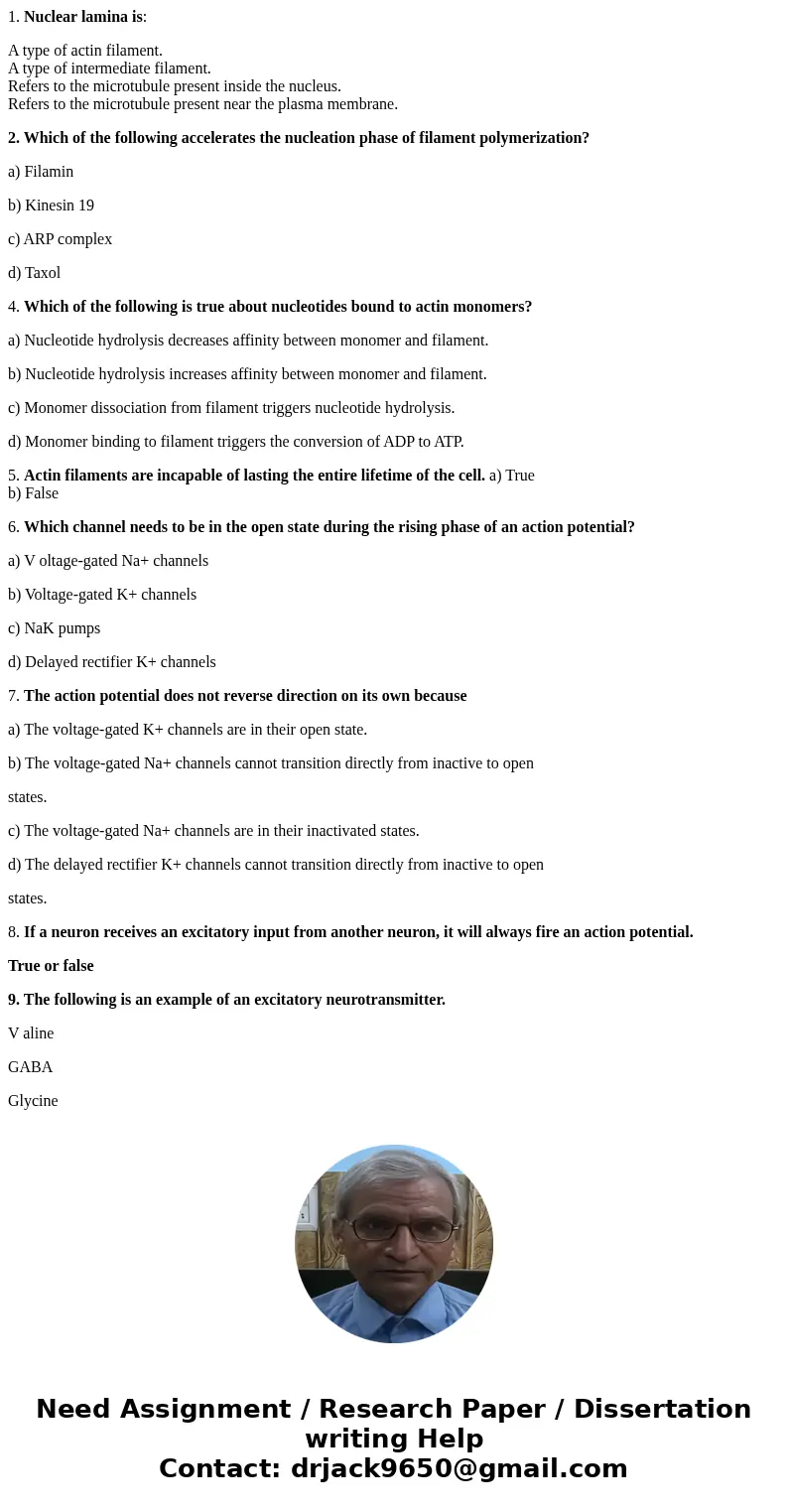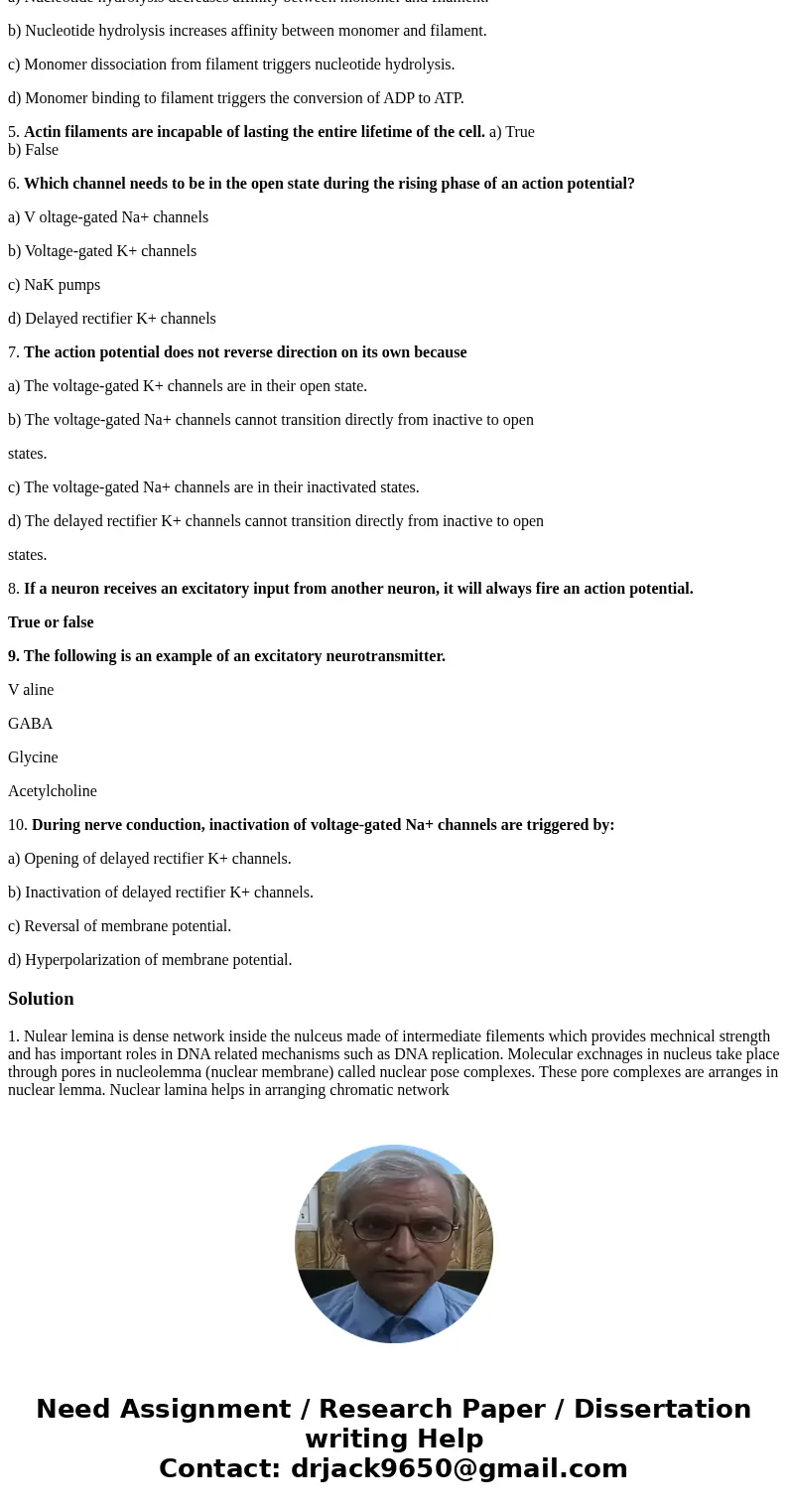1 Nuclear lamina is A type of actin filament A type of inter
1. Nuclear lamina is:
A type of actin filament.
A type of intermediate filament.
Refers to the microtubule present inside the nucleus.
Refers to the microtubule present near the plasma membrane.
2. Which of the following accelerates the nucleation phase of filament polymerization?
a) Filamin
b) Kinesin 19
c) ARP complex
d) Taxol
4. Which of the following is true about nucleotides bound to actin monomers?
a) Nucleotide hydrolysis decreases affinity between monomer and filament.
b) Nucleotide hydrolysis increases affinity between monomer and filament.
c) Monomer dissociation from filament triggers nucleotide hydrolysis.
d) Monomer binding to filament triggers the conversion of ADP to ATP.
5. Actin filaments are incapable of lasting the entire lifetime of the cell. a) True
b) False
6. Which channel needs to be in the open state during the rising phase of an action potential?
a) V oltage-gated Na+ channels
b) Voltage-gated K+ channels
c) NaK pumps
d) Delayed rectifier K+ channels
7. The action potential does not reverse direction on its own because
a) The voltage-gated K+ channels are in their open state.
b) The voltage-gated Na+ channels cannot transition directly from inactive to open
states.
c) The voltage-gated Na+ channels are in their inactivated states.
d) The delayed rectifier K+ channels cannot transition directly from inactive to open
states.
8. If a neuron receives an excitatory input from another neuron, it will always fire an action potential.
True or false
9. The following is an example of an excitatory neurotransmitter.
V aline
GABA
Glycine
Acetylcholine
10. During nerve conduction, inactivation of voltage-gated Na+ channels are triggered by:
a) Opening of delayed rectifier K+ channels.
b) Inactivation of delayed rectifier K+ channels.
c) Reversal of membrane potential.
d) Hyperpolarization of membrane potential.
Solution
1. Nulear lemina is dense network inside the nulceus made of intermediate filements which provides mechnical strength and has important roles in DNA related mechanisms such as DNA replication. Molecular exchnages in nucleus take place through pores in nucleolemma (nuclear membrane) called nuclear pose complexes. These pore complexes are arranges in nuclear lemma. Nuclear lamina helps in arranging chromatic network


 Homework Sourse
Homework Sourse